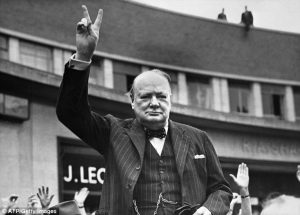Theory of Elite

Theory of Elite
It was in the seventeenth century that the word ꞌeliteꞌ was used for the first time. Its purpose was to describe “commodities of particular excellence; and the usage was later extended to refer to superior social groups, such as crack military units or the higher ranks of the nobility.”1 According to the Oxford English Dictionary “the earliest known use of elite in the English language is in 1823 at which time it was already applied to social groups. Nevertheless, the phrase did not become widely used in social and political writing until late in the nineteenth century in Europe, or until the 1930ꞌs in Britain and America, when it was diffused through the sociological theories of elites, notably in writings of Vilfredo Pareto.”2
Elite is described by Pareto in two different ways. Firstly he began with a very broad definition: “let us assume that in every branch of human activity each individual is given an index which stands as a sign of his capacity, very much the way grades are given in the various subjects in examinations in school. The highest type of lawyer, for instance, will be given 10. The man who does not get a client will be given 1- reserving 0 for the man who is an out-and-out idiot. To the man who has made his millions – honestly or dishonestly as the case may be – we will give 10. To the man who has earned his thousands we will give 6; to such as just manage to keep out of the poor-house 1, keeping 0 for those who get in… And so on for all the branches of human activity… So let us make a class of the people who have the highest indices in their branch of activity, and to that class give the name elite.”3 This concept of elite, as PARETO himself recognises, is simply used to indicate “the inequality of individual endowment in every sphere of social life, and as the starting point for a definition of the ꞌgoverning eliteꞌ “4, or as we shall call it ꞌpolitical eliteꞌ. This is his second way of describing the concept which is related to our studies and is his real subject matter. In that Pareto goes on by saying: “For the particular investigation with which we are engaged, a study of the social equilibrium, it will help if we further divide that class [the elite] into two classes: a governing elite comprising individuals who directly or indirectly play some considerable part in government, and a non-governing elite comprising the rest… So we get two strata in a population: (1) A lower stratum, the non-elite, with whose possible influence on government we are not here concerned; then (2) a higher stratum, the elite, which is divided into two: (a) a governing elite; (b) a non-governing elite.”5 Paretoꞌs earlier writings, such as ꞌCours DꞌEconomic Politiqueꞌ (in which he propounded the idea of a normal curve of the distribution of wealth in a society) and ꞌLes Systemes Socialistesꞌ, explains how he arrived at this conception.



